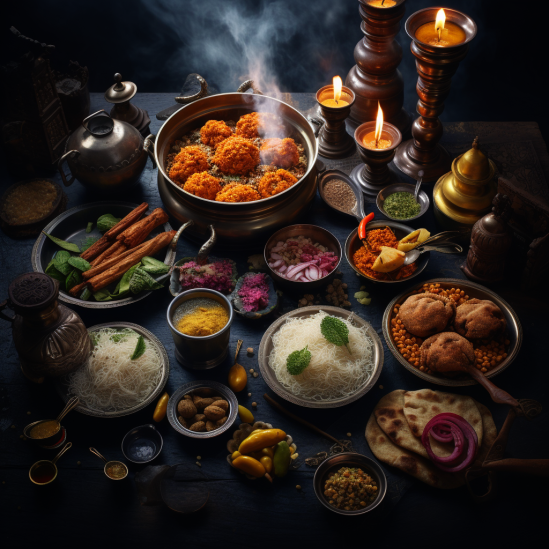The faithful offer their deities food as part of their faith; these offerings can be as varied as their faith.
Every religion, culture, tradition, faith has its food rituals. So, it’s unsurprising that we have a long history of offering food as an act of devotion. From Krishna’s Chappan Bhog to the ceaseless langar at the Golden Temple, we have always had elaborate meals associated with our faiths – food to prepare, to give, and to receive. When we visit temples and shrines, we carry our deities’ favourite foods as an offering.
There is an interconnected relationship here – devotees believe that the gods provide us with lands and rain, and we, in return, labour and produce food. And so, food is first offered to the Gods, while leftovers are distributed among us. Food becomes a symbolic and sacred thread between humans and their faith. Typically, fruits, sweets, grains, and rice dishes are offered to deities, but there are no boundaries when it comes to what might be offered. From liquor to meat, there are deities that take them all. In the Vedas, out of a list of 250 animals, 50 are considered appropriate for a yajna or sacrifice including cows, goats, horses, and sheep.
Through research and readings, we found some quite unusual rituals of offerings to the deities. And astonishingly the list does not stop here.
- A suburb in Surat, Katargram, has a shrine dedicated to Mamadev Baba where cigarette offerings are a staple.
- The Chinese community of Kolkata offers dumplings, fried rice and chopsuey at their Kali temple.
- The Tantric deities of India and of Buddhist Tibet are offered the pleasure of five senses. The sense of taste consists of a cup made of skull (kapala) that holds either wine – symbolising blood – or unbaked dough cakes made from barley flour and butter. These cakes are shaped like human organs – the tongue, nose, heart, eyes, and ears – that are realistically shaped and coloured.
- Kali as the goddess of universal power is often offered animals as sacrifices along with blood to quench her hunger.
In Foods Offered to Deities in Bengal: Tasting Ethnographic Flavours in the Gastronomic Offerings Prevalent in Bengali Culture, the authors write, “The question that needs to be addressed and understood, in this context, is why the gods and the goddesses are offered food. The simple answer is that in our existing belief system, all these gods and goddesses are living beings like human beings. So, they need food for their survival. And since they cannot manage or cook their food, it is our sacred duty to feed them because they protect us, they bless us.”
It’s erroneous to assume that offerings to deities are limited to vegetarian food. Alcohol, tobacco, meat, and fish have always been associated with offerings. In Alibaug, a coastal town where locals love their fish and meat, devotees offer a huge feast of mutton, prawns, chicken, crabs, and dried shrimp as a homecoming naivadeya to Lord Ganesha on the first day of Ganesh Chaturthi. Local culture and cuisines determine the menu of offerings.
Dr. Kumud Pawade, the first Ambedkarite Sanskrit Scholar, in an interview with Whetstone Magazine says that the naivedyas in her childhood included mundi (head), khur (trotters), and rakti (blood) of the goat. This was typically offered to Goddess Mahakali. In the rituals of the Karbi tribe of Meghalaya, chicken and rice beer are an important part of their offerings. This is to ensure a successful sowing season. However, it is their process that is quite unusual. They pull out the entrails of the chicken to predict the yield and then offer it to their deities. Rice beer is sprinkled on the deities to ensure the onset of rain.
The significance of the bhog enriches the symbiotic relationship between faith and the faithful. It is believed that deities are as much as real beings and while they are made to sleep, bathe, and dress accordingly, they should be fed like they are real too. To our gods, we offer what we eat.

